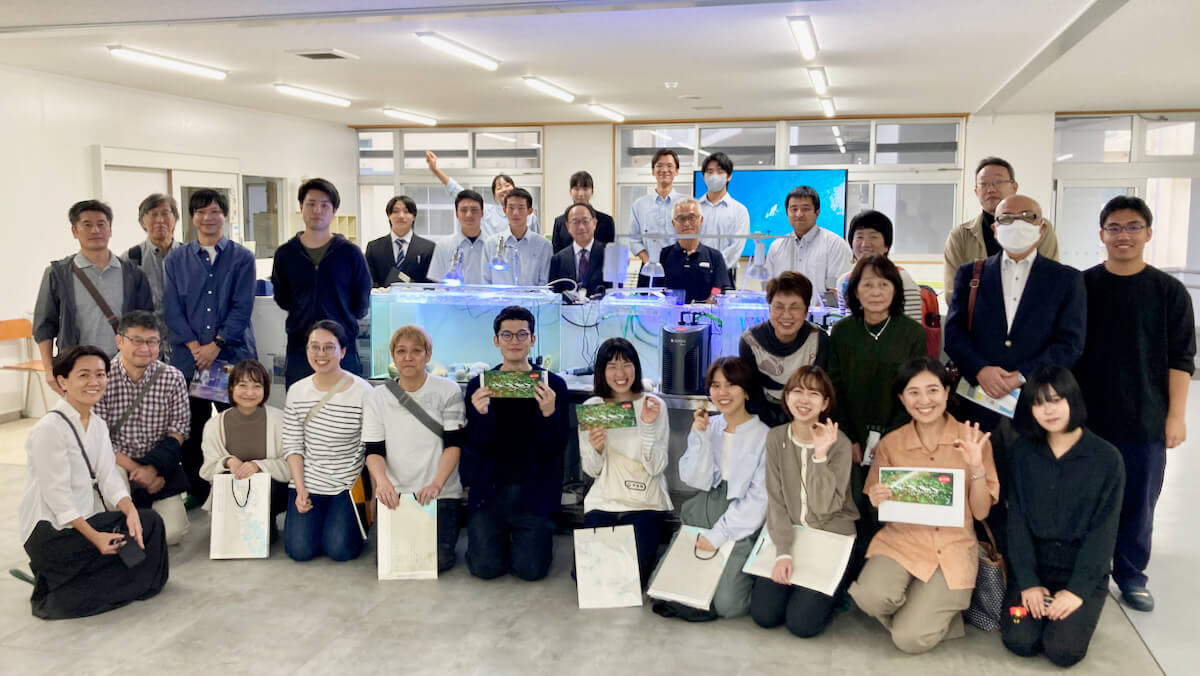2023年10月14日(土)に、周防大島オフィス近くの周防大島高校で、地元に生息する貴重な「アワサンゴ」の勉強会を開催しました。翌日のワークショップのために来ていた東京や神山オフィスのメンバーにも参加いただき、約40人の盛大な会になりました。
そもそもアワサンゴって何・・・?
皆さんは”サンゴ”と聞いてどんな姿を思い浮かべますか?
・・・きっと色鮮やかで、木の枝のような、硬そうなサンゴをイメージしたのではないでしょうか?

一般的なサンゴ
そもそもサンゴは大きく分けて「ソフトコーラル」と「ハードコーラル」に分類されます。
ソフトコーラルは骨格がありませんので、死ぬと跡形もなくなってしまいます。
ハードコーラルは骨格を持っています。つまり死ぬと骨が残るタイプのサンゴです。
ニホンアワサンゴは、「ハードコーラル」に分類されますが、見た目は「ゆらゆら・ふわふわ」が個人的にぴったりな気がします。東アジアに生息するサンゴの仲間で、浅瀬の岩に生息しています。
周防大島内では、周防オフィスから徒歩10分の地家室海域公園でもある地家室地蔵ヶ浦や、地家室のお隣の島の沖家室の小水無瀬島で生息しているのが確認されています。
そんな周防大島のアワサンゴの群生地ですが、実は広さが”世界最大級”なのです。
・・・もう一度言いますが、「世界最大級」なのです。
また、生息が確認されている海域は限られており、地家室地蔵ヶ浦のアワサンゴは2020年の9月に一度絶滅しかけているなど、生息数も少ないことから、とても貴重なものなのです。
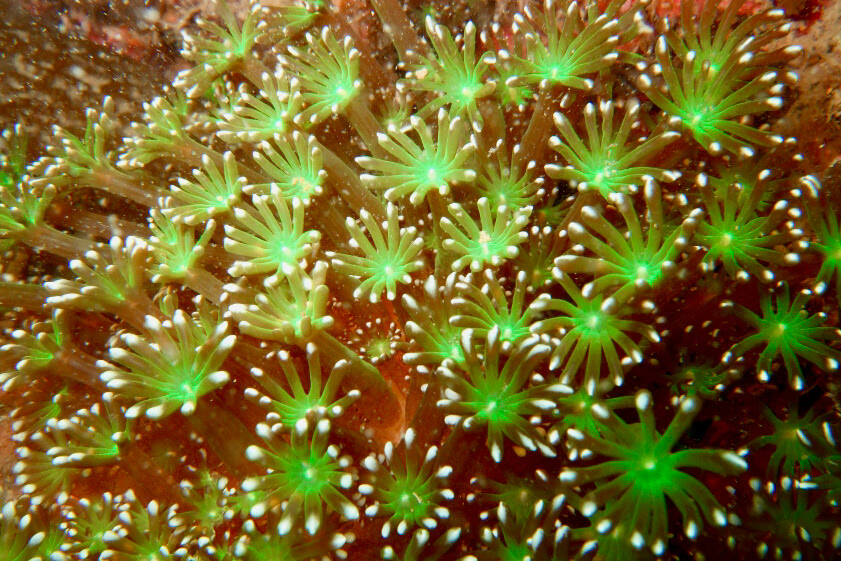
通称「海の花束」ニホンアワサンゴ
きっかけは、「周防大島オフィスをよくする会議」
周防大島オフィスでは、3ヶ月に1回の頻度で、「周防大島オフィスをよくする会」を開催しています。
ファシリテーターの青木さんの進行のもと、「もっとこうしたらオフィスが良くなるんじゃない?」「これは良いルールだから続けていきたいよね!」などと、メンバー同士で話し合う大事な会になっています。
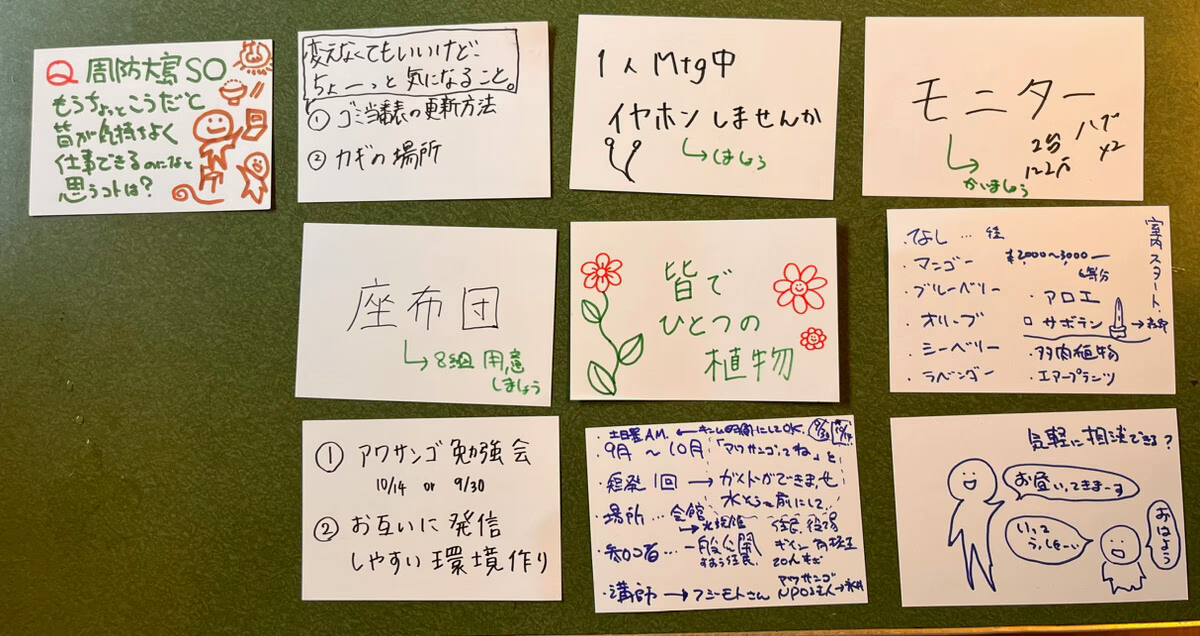
周防大島をよくする会
いつかの周防大島オフィスをよくする会では、会議室が少ないことが問題に挙げられ、全員が快適に仕事ができるように、ミーティングのルールを細かく決めたりもしました。
そんな中で、オフィスから徒歩5分ほどのところに、環境省と周防大島町との合同事業として、アワサンゴの保護活動や訪問者の休憩のための施設が来年できるという話があり、その施設のフリースペースを、会社の会議室が埋まっているときに使わせてもらう代わりに、施設にとっても私たちが役に立つことができるといいなという話になりました。
せっかくのアワサンゴ保護のための施設なので、私たちが観光客に向けた簡単な案内ができるガイドができるようになったらどうだろうか?ということに。
そうは言っても、当時の私たちはアワサンゴの知識を持っているわけでもなく、実物も見たことがありませんでした。
そこで、アワサンゴについて学ぶ勉強会を開催しよう!ということになりました。
そこで、ニホンアワサンゴの飼育をしているという地元の周防大島高校の環境コース3年生の生徒さんたちと先生、ニホンアワサンゴの調査・保護活動を行っている NPO法人 自然と釣りのネットワークの藤本さんに、講座の協力を依頼しました。
協力していただけるメンバーが決まってからは、みんな大忙し。
自分たち以外にも広く参加者を募る広報活動や当日配るステッカーの準備、講座の資料作成やリハーサルなど、1か月の間にそれぞれが一生懸命準備をしました。
当日は、予想を上回る40人が参加
いよいよアワサンゴ勉強会当日。
翌日のワークショップのために来ていた東京・神山のモノサスメンバーがいたこともあって、予想以上の参加者に来ていただき、嬉しかったと同時に緊張も高まりました。
まずは高校生と藤本さんによる、アワサンゴ講座。高校生によるクイズ形式でわかりやすい説明で、会場は大盛り上がり。
そして藤本さんによる、アワサンゴの現状やこれからのことについてのお話で、これまで認識していた以上に、アワサンゴやここ周防大島の環境問題について考えさせられました。
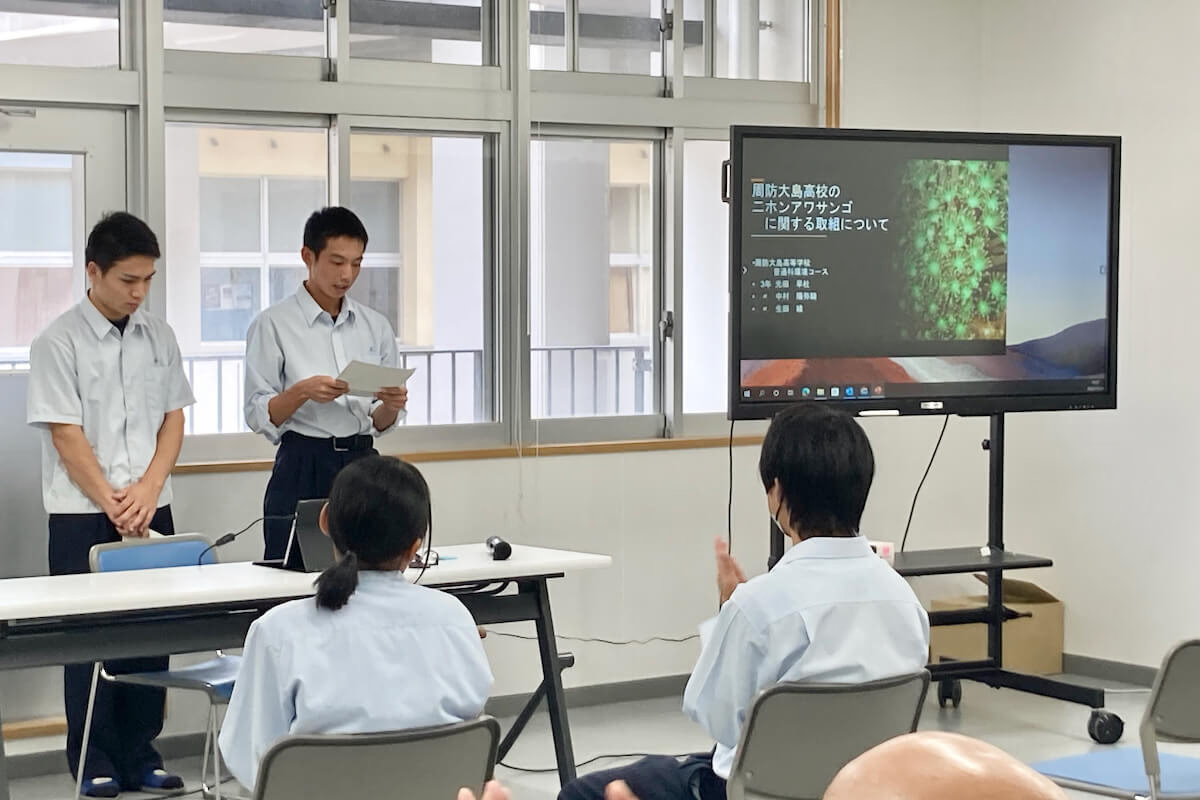
高校生の発表
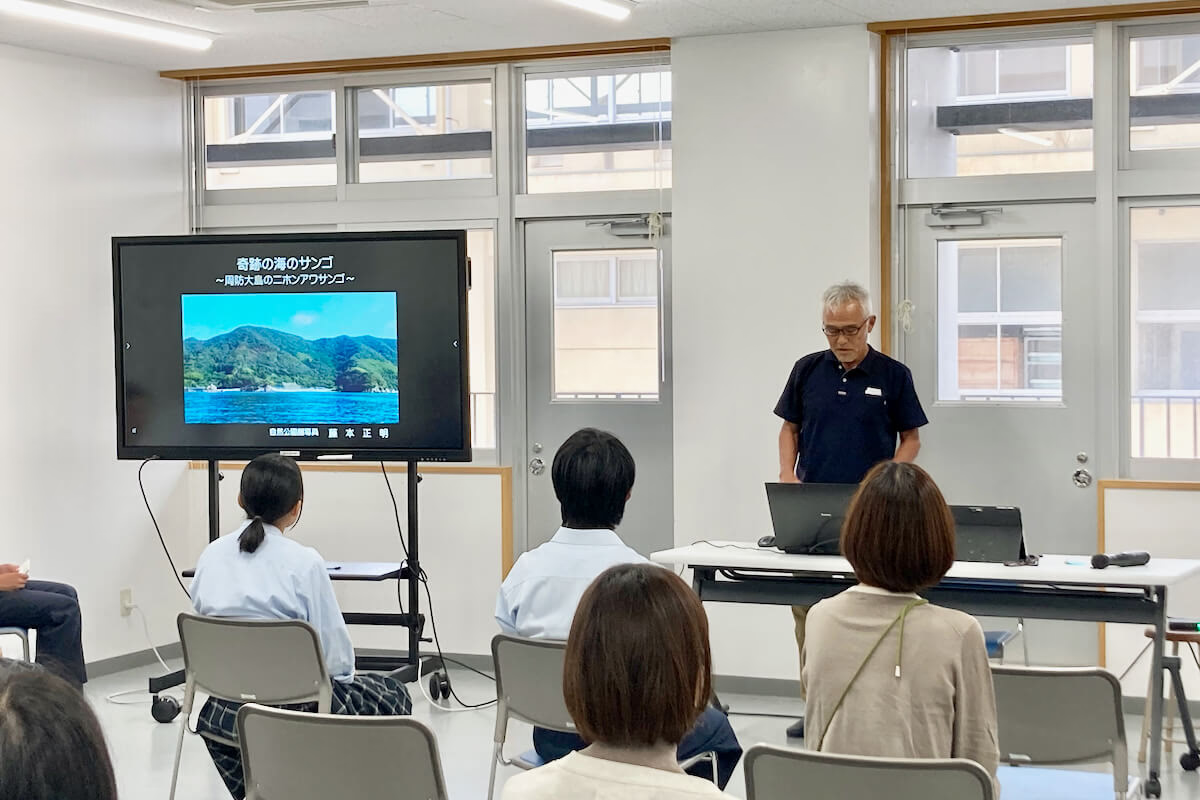
藤本さんの講座

当日の受付担当はモノサスメンバーで
これらの発表で得た知識を駆使して、いよいよガイド体験!グループごとに分かれてガイド役とお客さん側に分かれて実践をしてみました。
実践後に思ったことは、とにかく「難しい!」。「ガイド」として成立するには、高校生や藤本さんレベルの知識が必要なんだな、と改めて実感しましたが、高校生にサポートをしてもらいつつ、なんとか無事にガイド体験が終了しました。
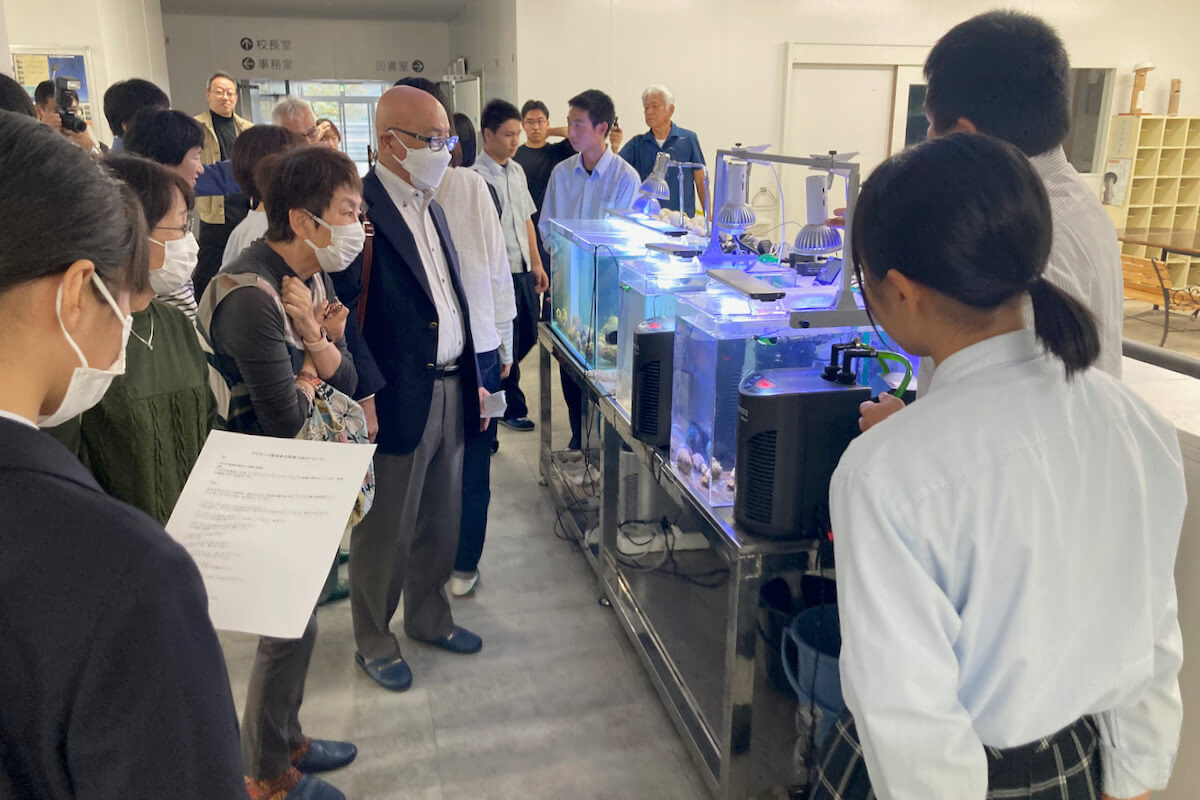
ガイド体験
全プログラム終了後、勉強会に参加してくれた高校の2年生から、「来年もやりたい、今度は『アワサンゴ検定』を作ってさらにアワサンゴのことを広めたい!」という声や、他にも、「面白かった」「やってよかった」「アワサンゴの保護活動に参加したい!」というようなお言葉もいただいたことで、来年度にも何かつなげたいな、と今からワクワクしています。
また、当日の様子は中国新聞にも掲載していただきました。
私たち自身も、何かを企画して人に集まっていただく機会はなかなかなかったので、とても良い経験になりました。
来年度もまた企画をして、地域の方達と一緒に周防大島の宝、ニホンアワサンゴについて広めて行けたら良いなと思っています。
